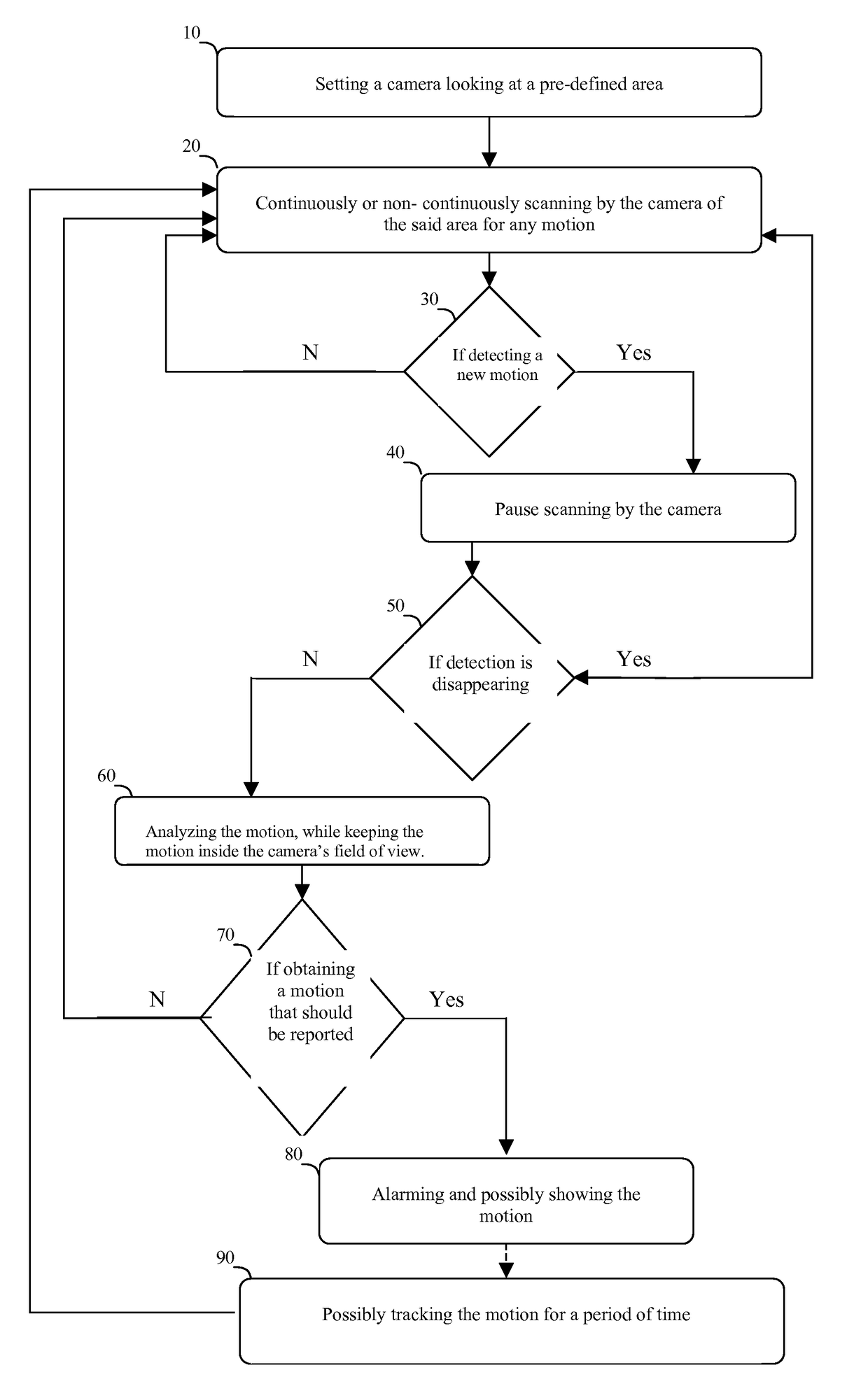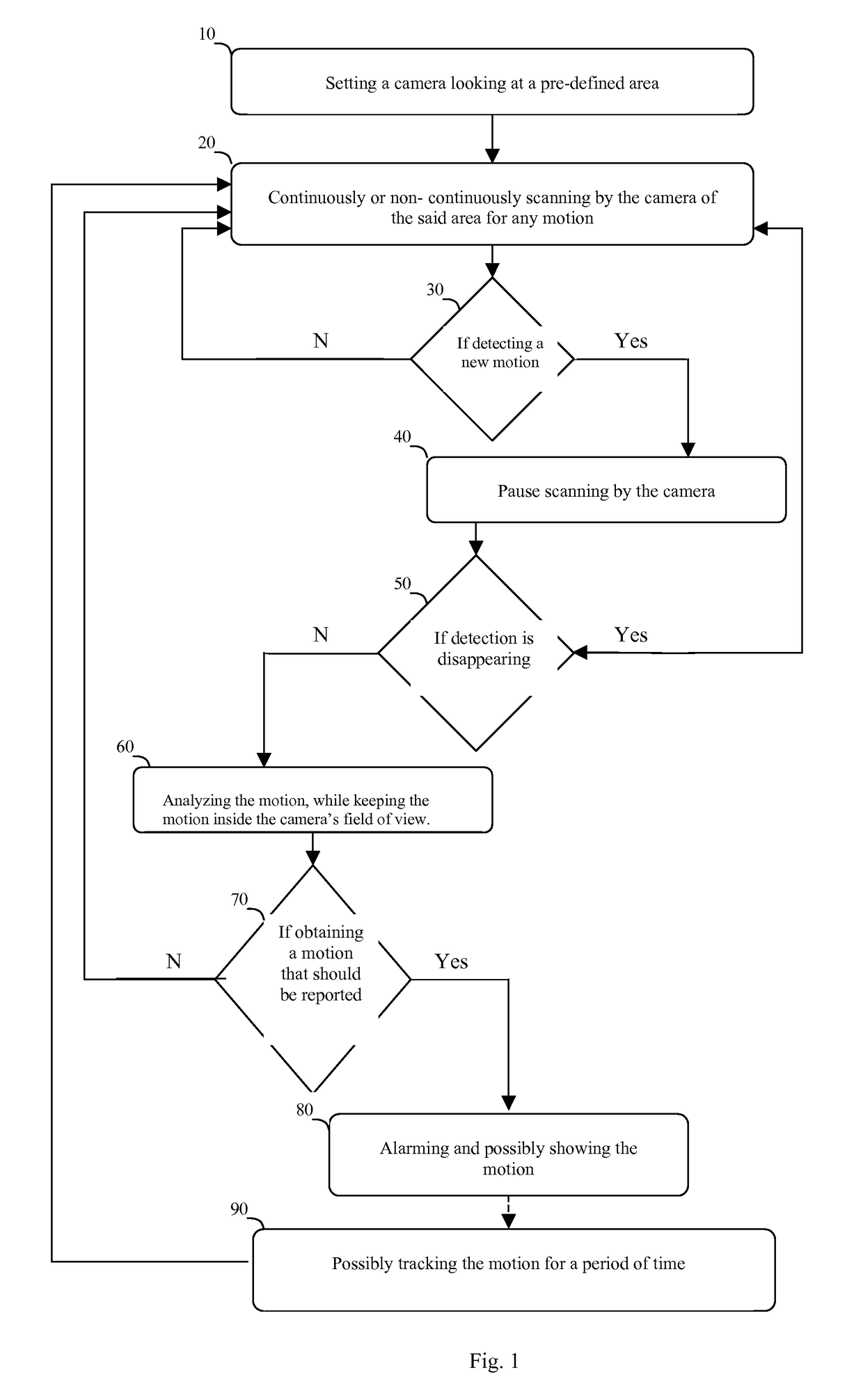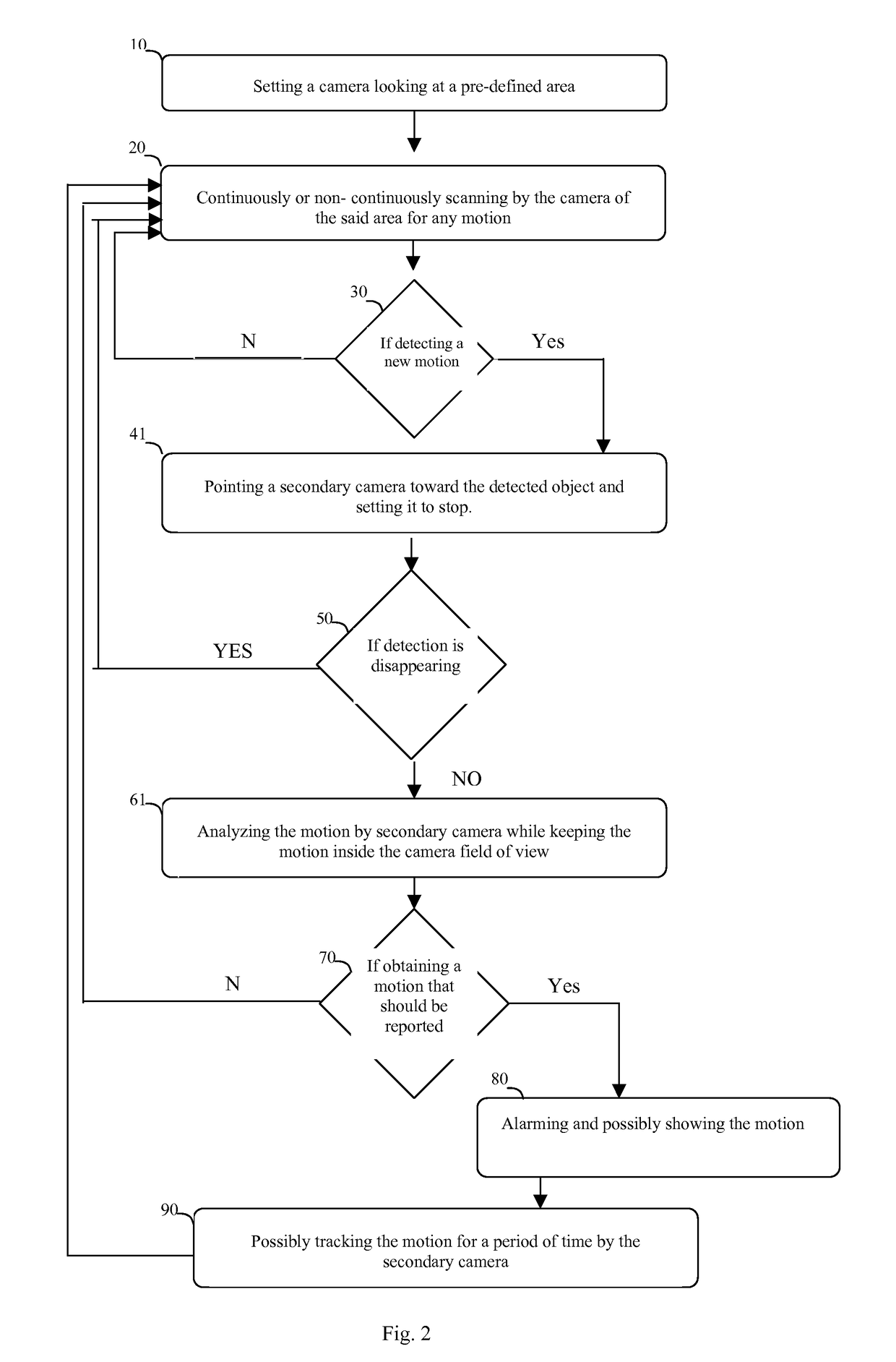Method and a system for false alarm reduction in motion detection by scanning cameras
a scanning camera and motion detection technology, applied in the direction of electromagnetic systems, television systems, instruments, etc., can solve the problems of system being very sensitive to false alarms, time duration needed by the system, and the rate of motion detection with scanning cameras suffers from a relatively high rate of false alarms, so as to facilitate motion detection of objects and reduce false alarms
- Summary
- Abstract
- Description
- Claims
- Application Information
AI Technical Summary
Benefits of technology
Problems solved by technology
Method used
Image
Examples
example 1
[0051]A scanning system with a single camera:
[0052]A camera with FOV (field of view) of 2 degrees is scanning a strip of 40 degrees (20 FOVs). The camera movements can be controlled by the system.
[0053]Assume that the system can detect motion while the camera is scanning and the detection resolution of the system is four pixels, i.e. the minimal translation that can be detected by the system is four pixels.
[0054]Let us assume the following system requirements: In order to provide an alert, the camera must observe a translation of more than 16 pixels at a speed of more than 2 pixels / second; any motion failing to meet this criterion will be considered unimportant background motions. The camera's scan rate should be as fast as possible and the alert must be provided in no more than one minute, assuming that no more than 2 moving objects exist in the scanning strip.
[0055]With these requirements, and if not using any of methods described herein, eight seconds are needed to detect the slo...
example 2
[0060]A scanning system with a scanning camera and a secondary camera:
[0061]A camera with FOV (field of view) of 2 degrees is scanning a strip of 40 degrees (20 FOVs). The camera movements can be controlled by the system.
[0062]Assume that the system can detect motion while the camera is scanning and the detection resolution of the system is four pixels, i.e. the minimal translation that can be detected by the system is four pixels.
[0063]The system is equipped with a secondary camera. When a new motion is detected by the scanning camera, the secondary camera can be directed to this detected motion in less than one second such that the detected motion will be approximately in the center of the field of view.
[0064]The secondary camera can track the motion if the object is going to exit the field of view.
[0065]Let assume the following system requirements: In order to provide an alert, the camera must observe a translation of more than 16 pixels having a speed above 2 pixels / second; othe...
PUM
 Login to View More
Login to View More Abstract
Description
Claims
Application Information
 Login to View More
Login to View More - R&D
- Intellectual Property
- Life Sciences
- Materials
- Tech Scout
- Unparalleled Data Quality
- Higher Quality Content
- 60% Fewer Hallucinations
Browse by: Latest US Patents, China's latest patents, Technical Efficacy Thesaurus, Application Domain, Technology Topic, Popular Technical Reports.
© 2025 PatSnap. All rights reserved.Legal|Privacy policy|Modern Slavery Act Transparency Statement|Sitemap|About US| Contact US: help@patsnap.com



